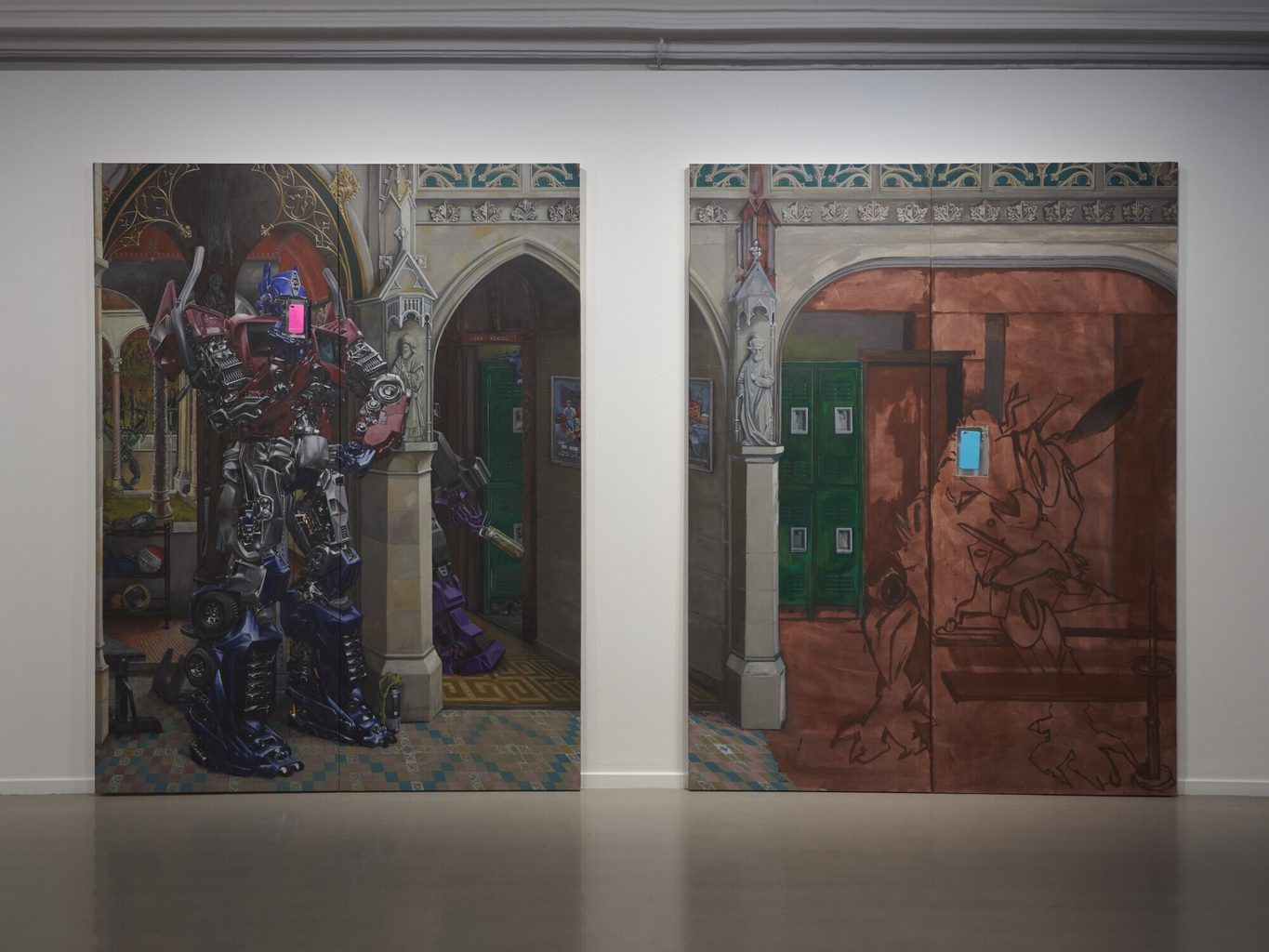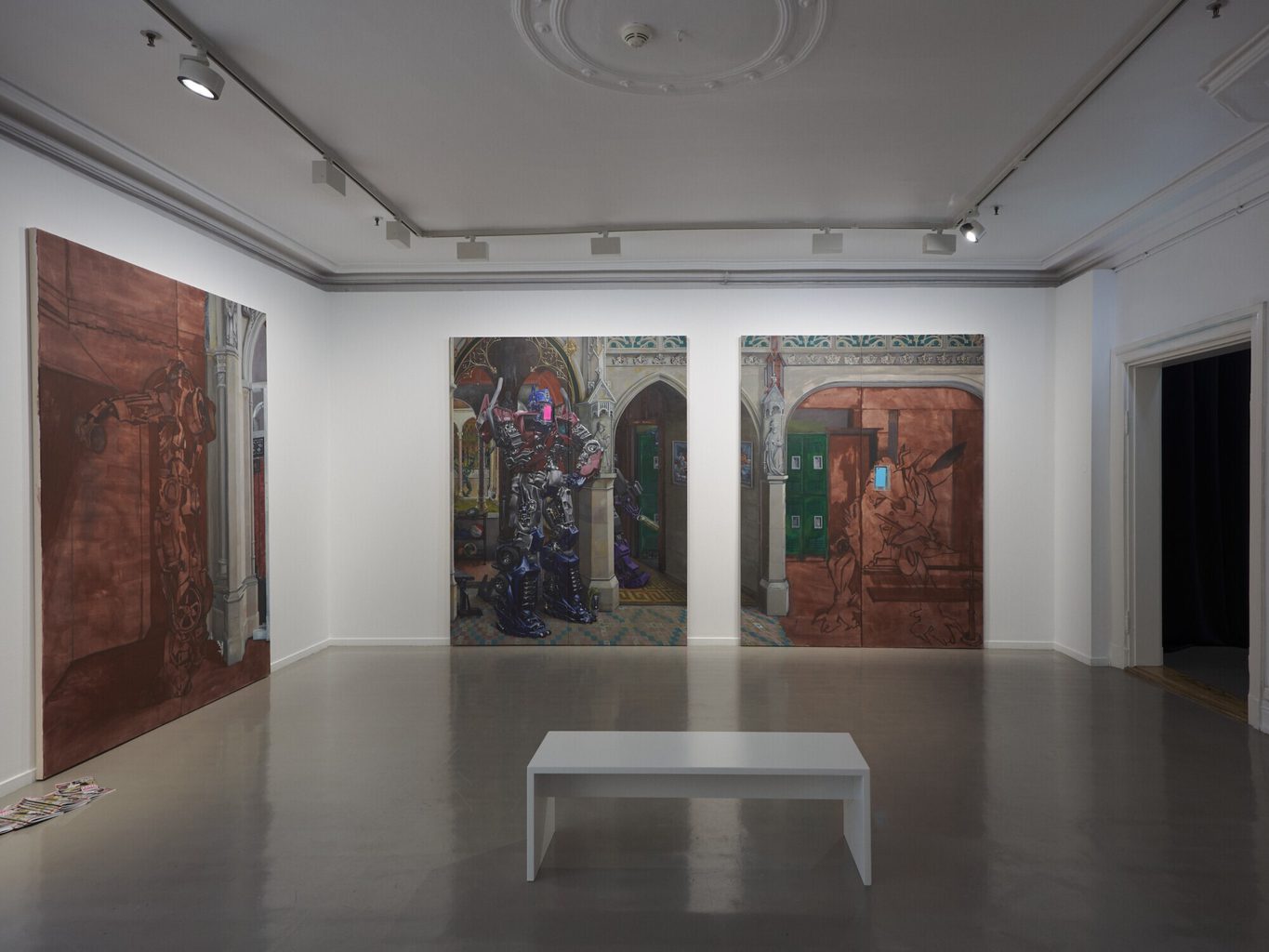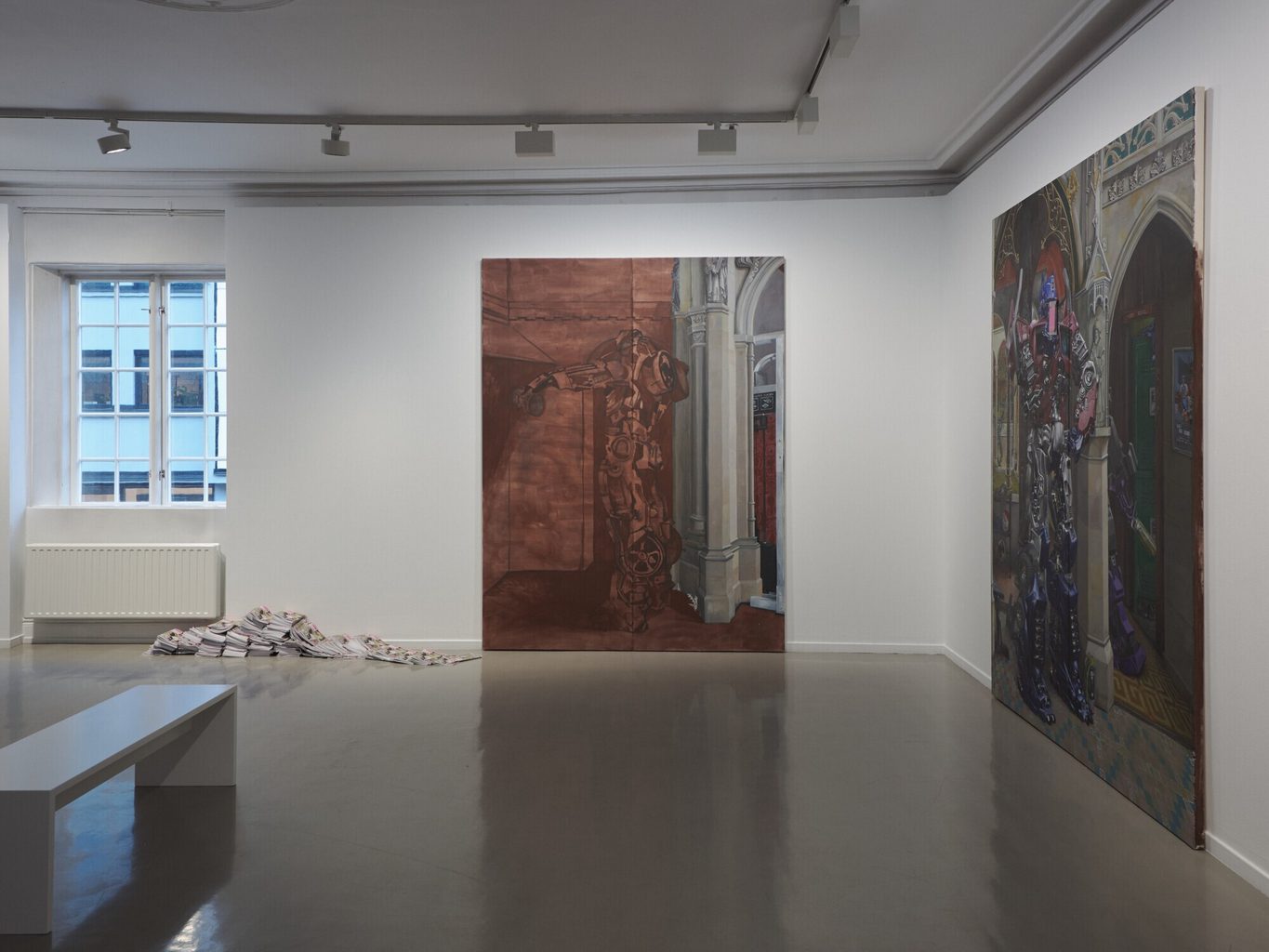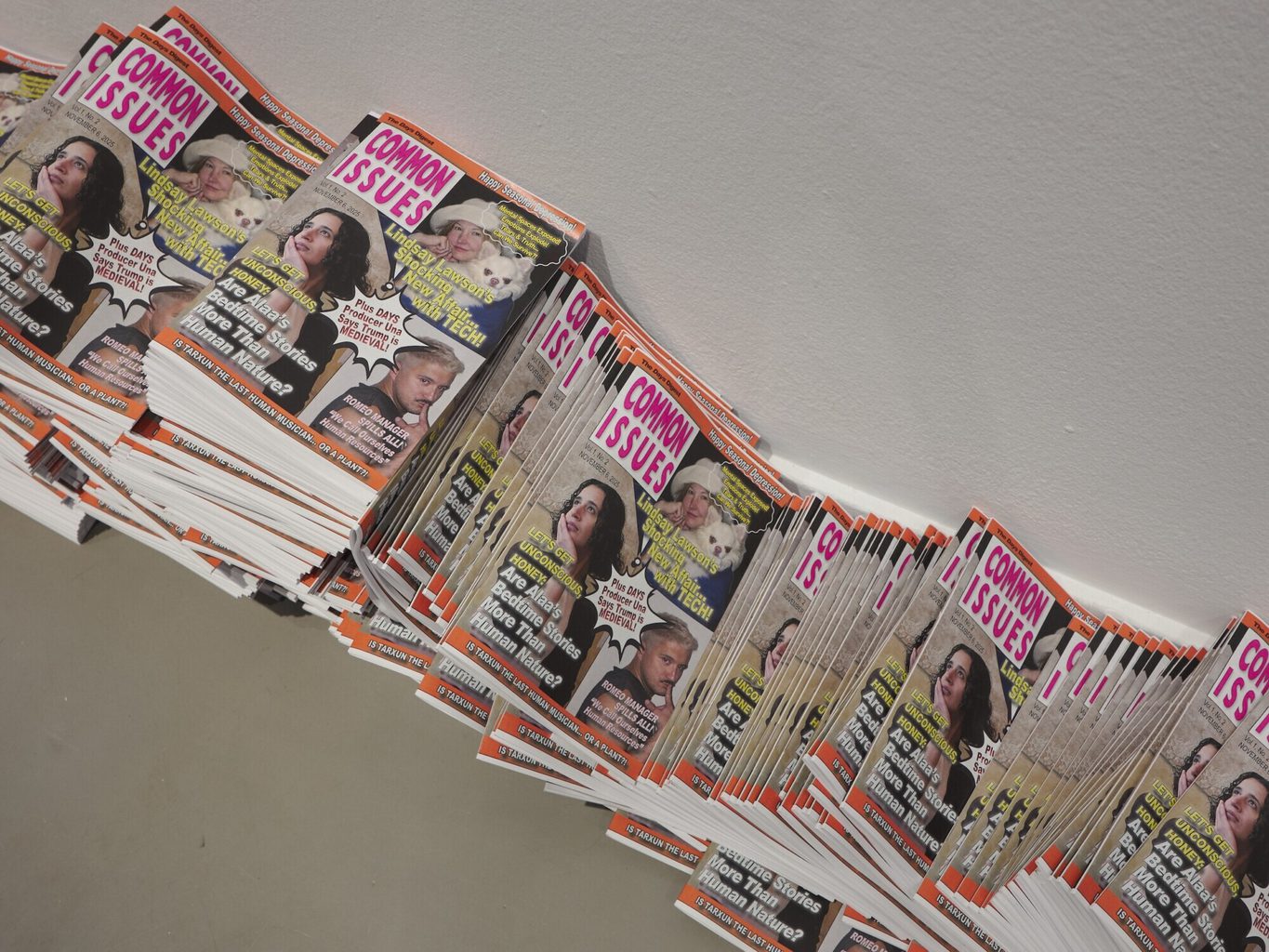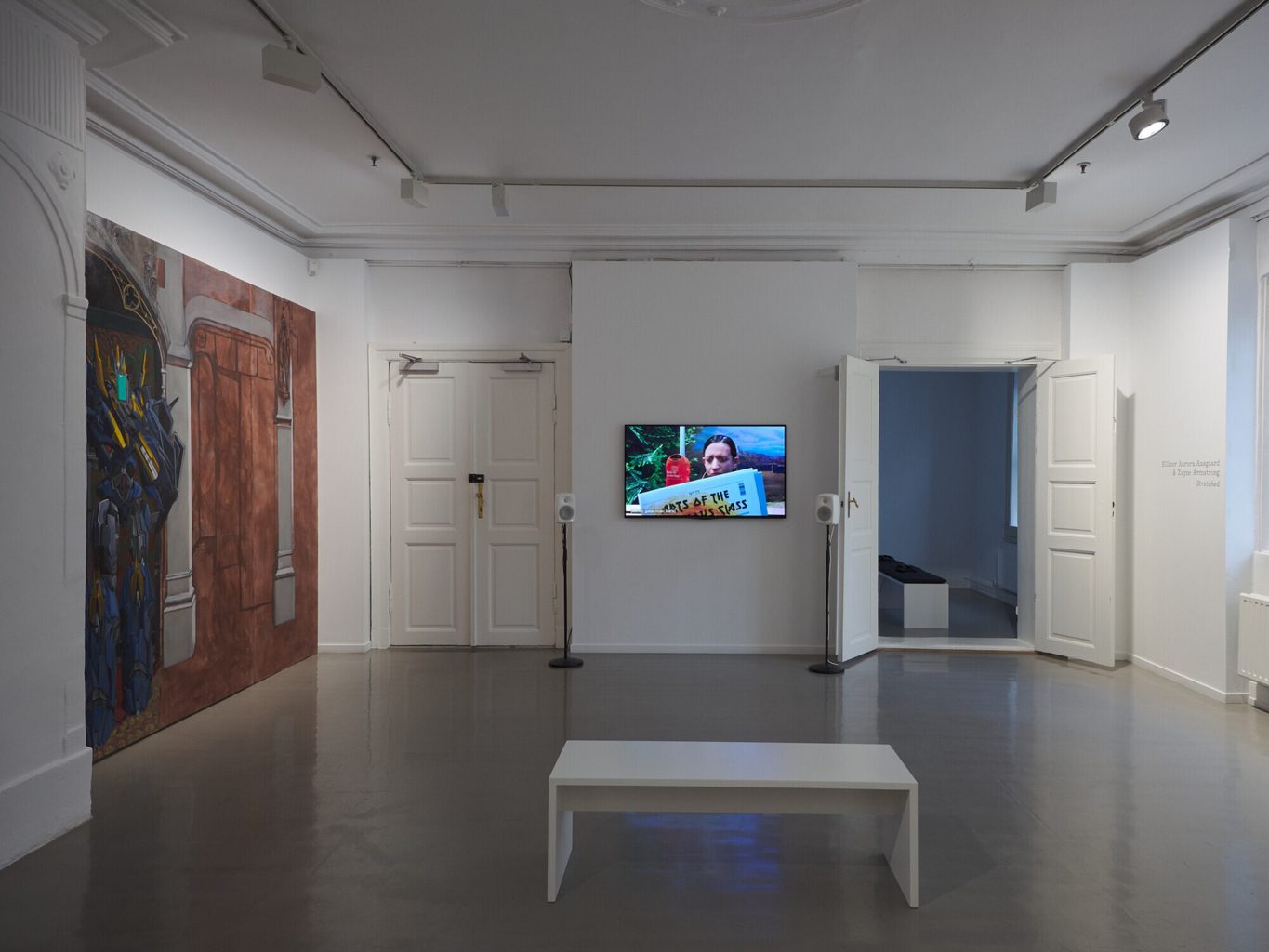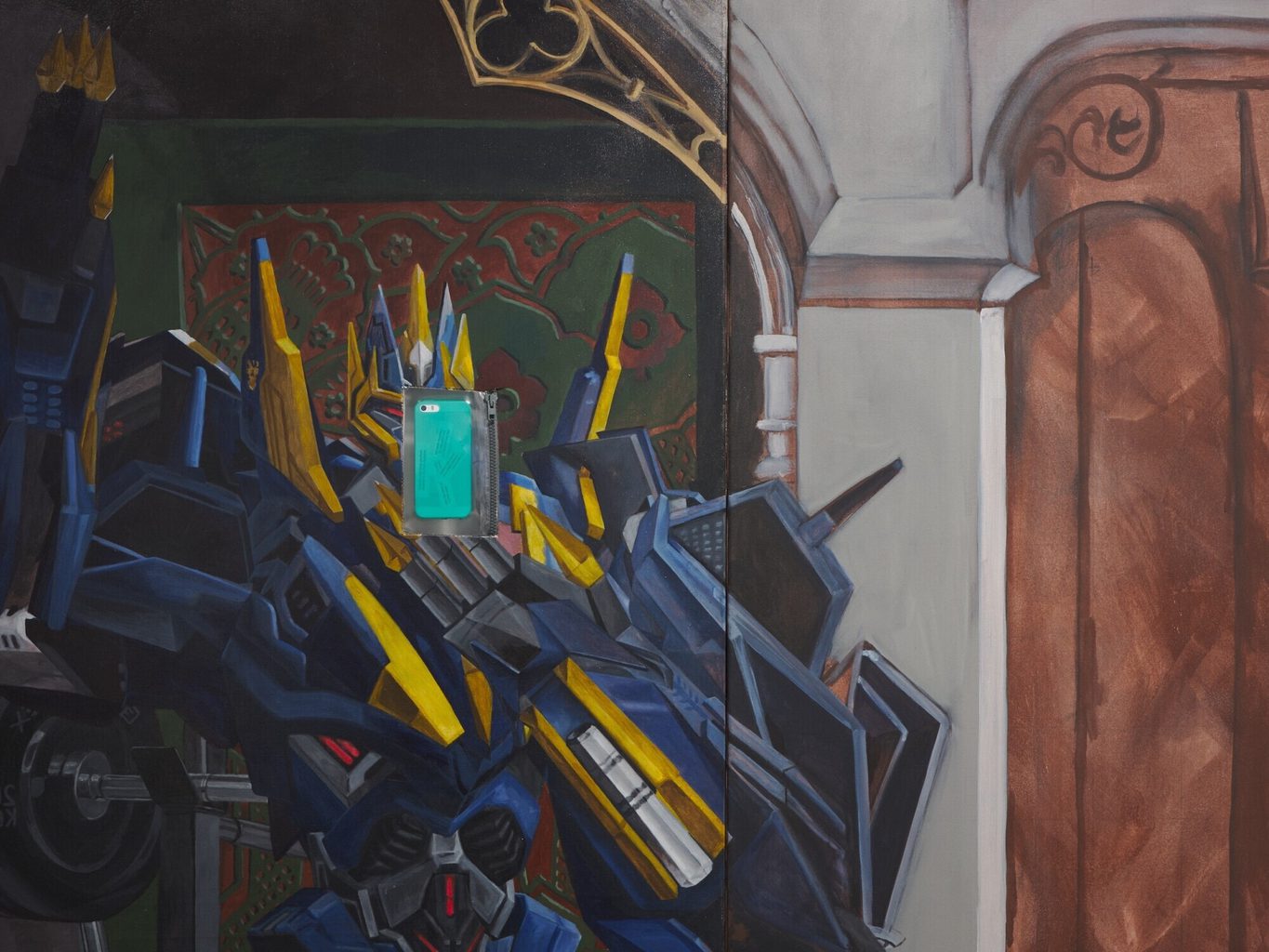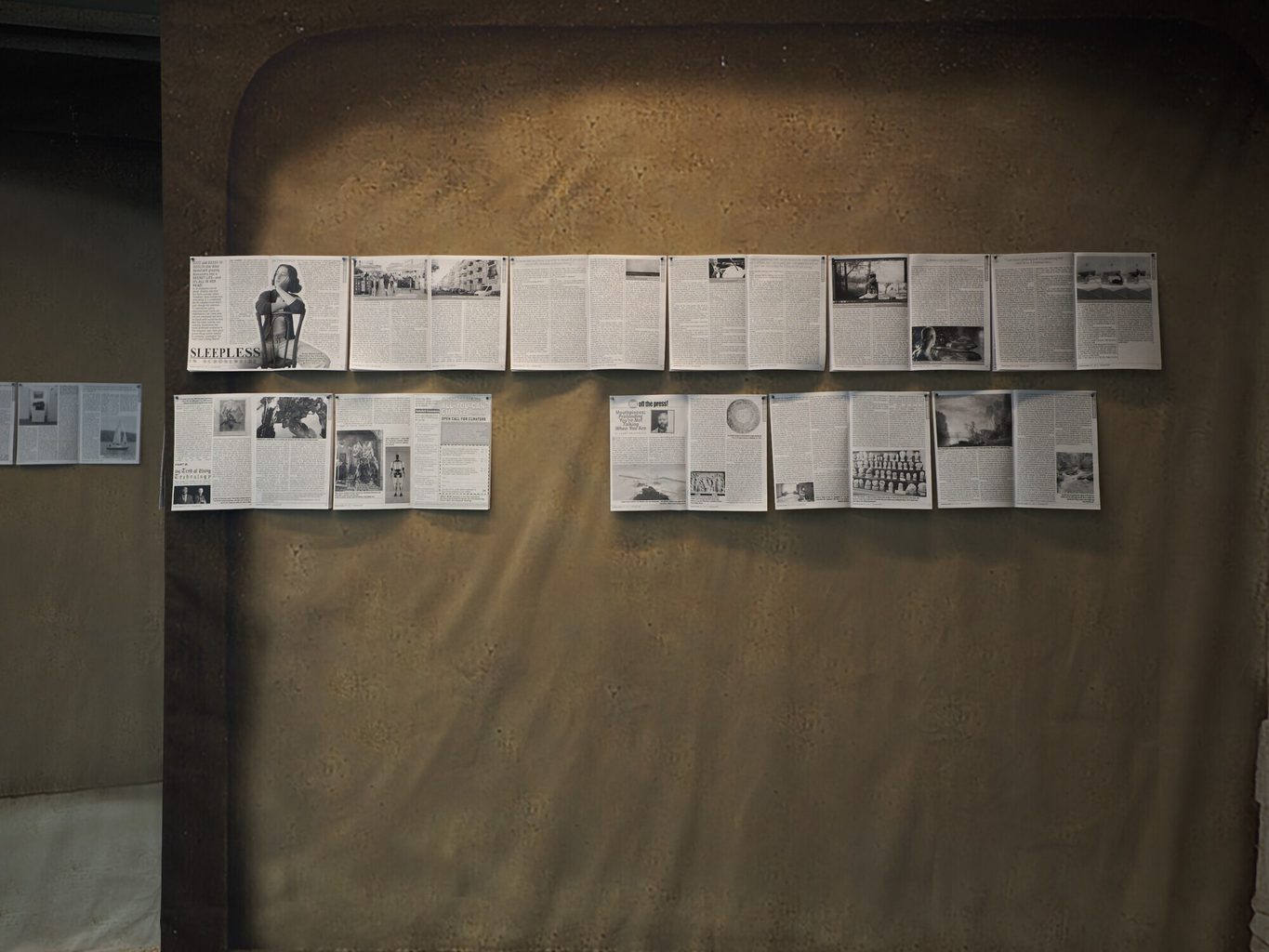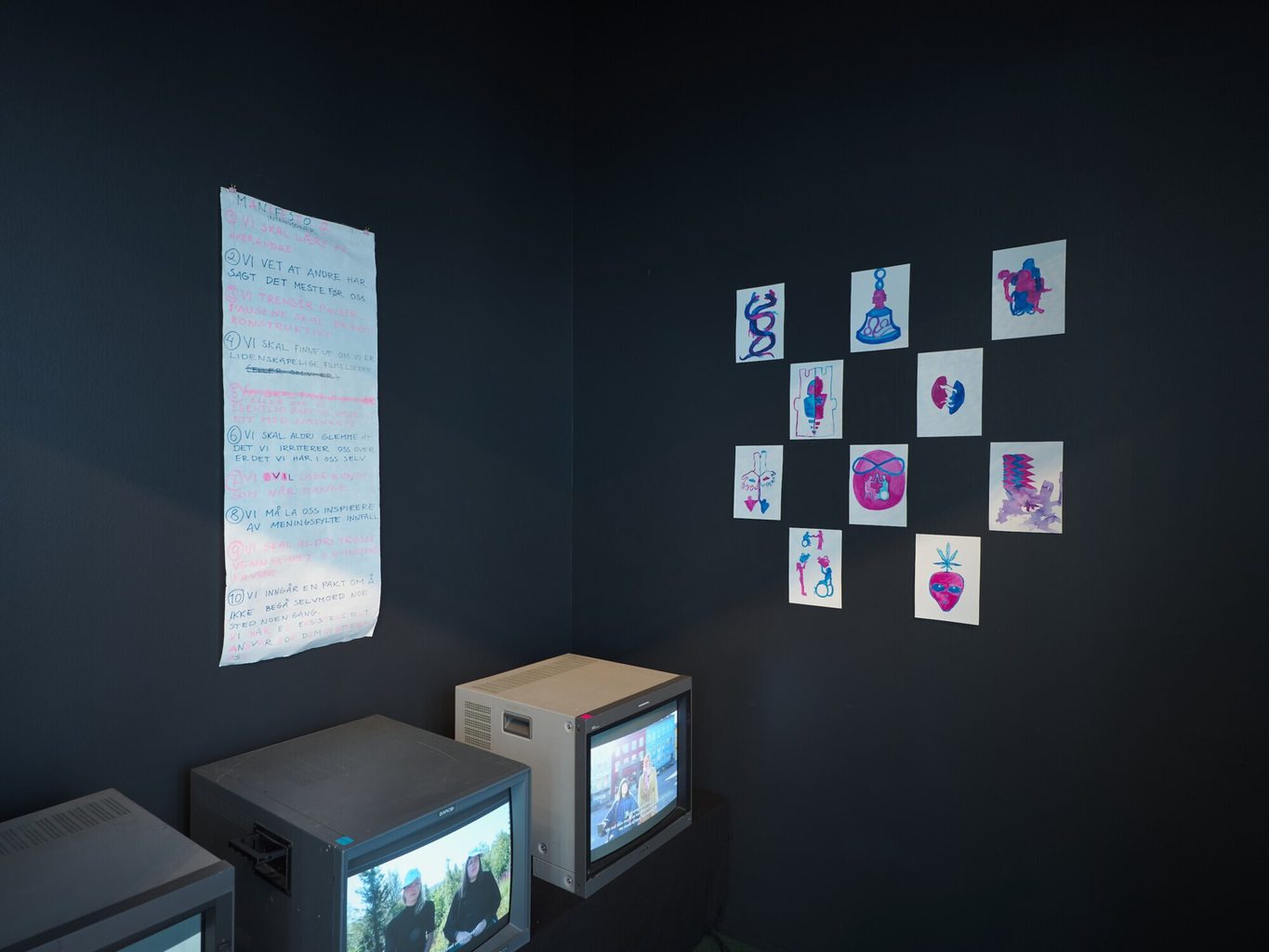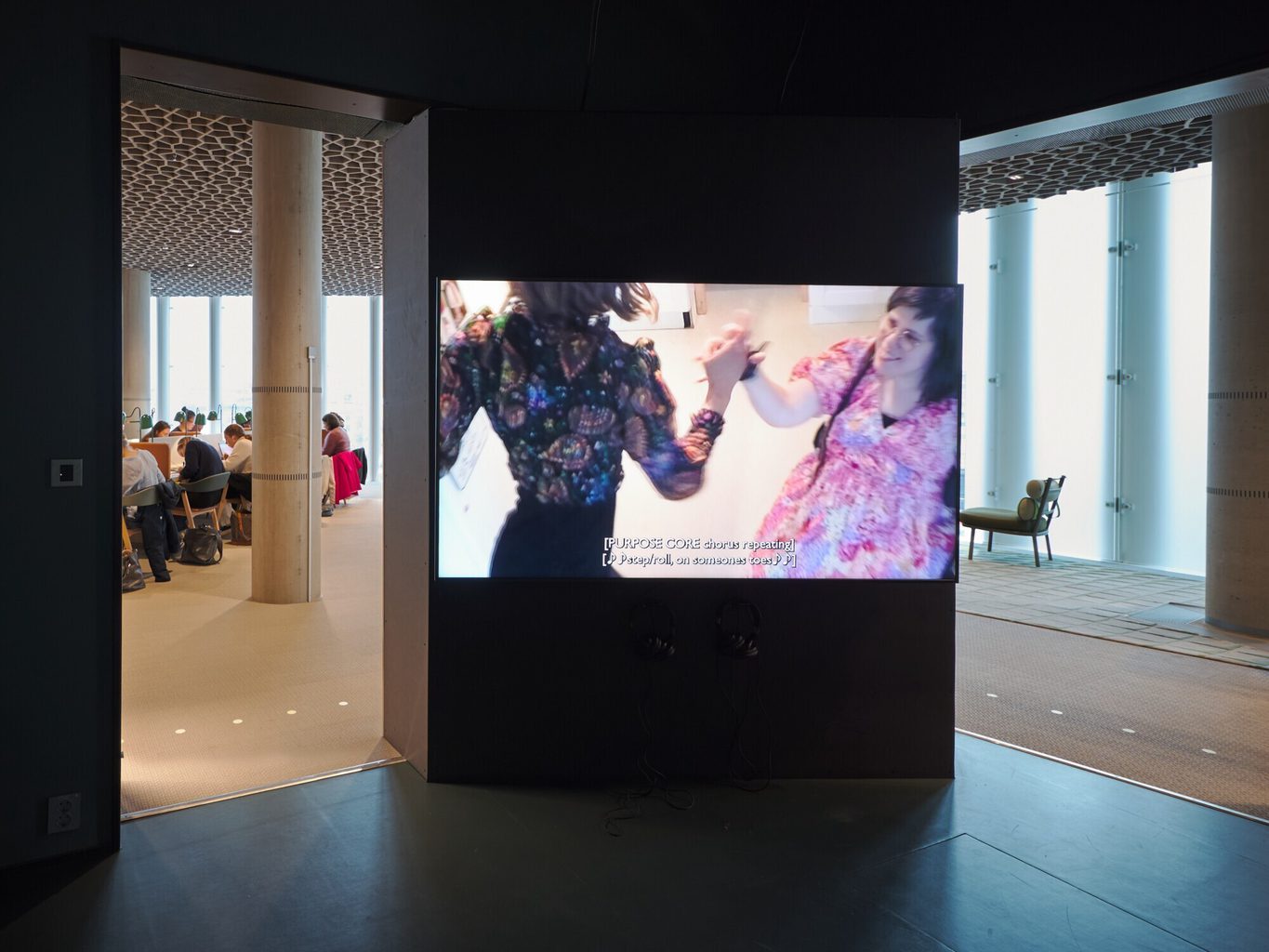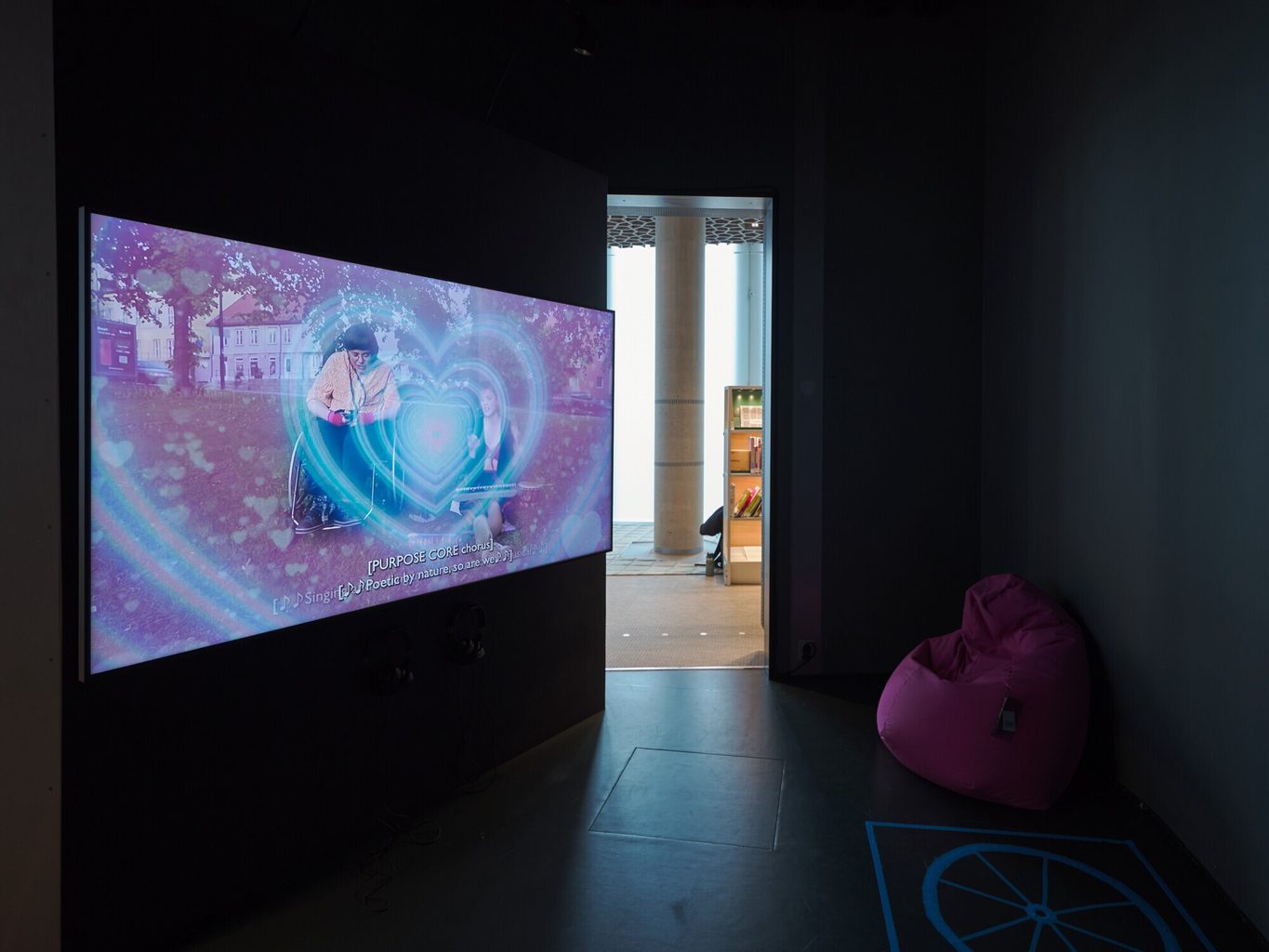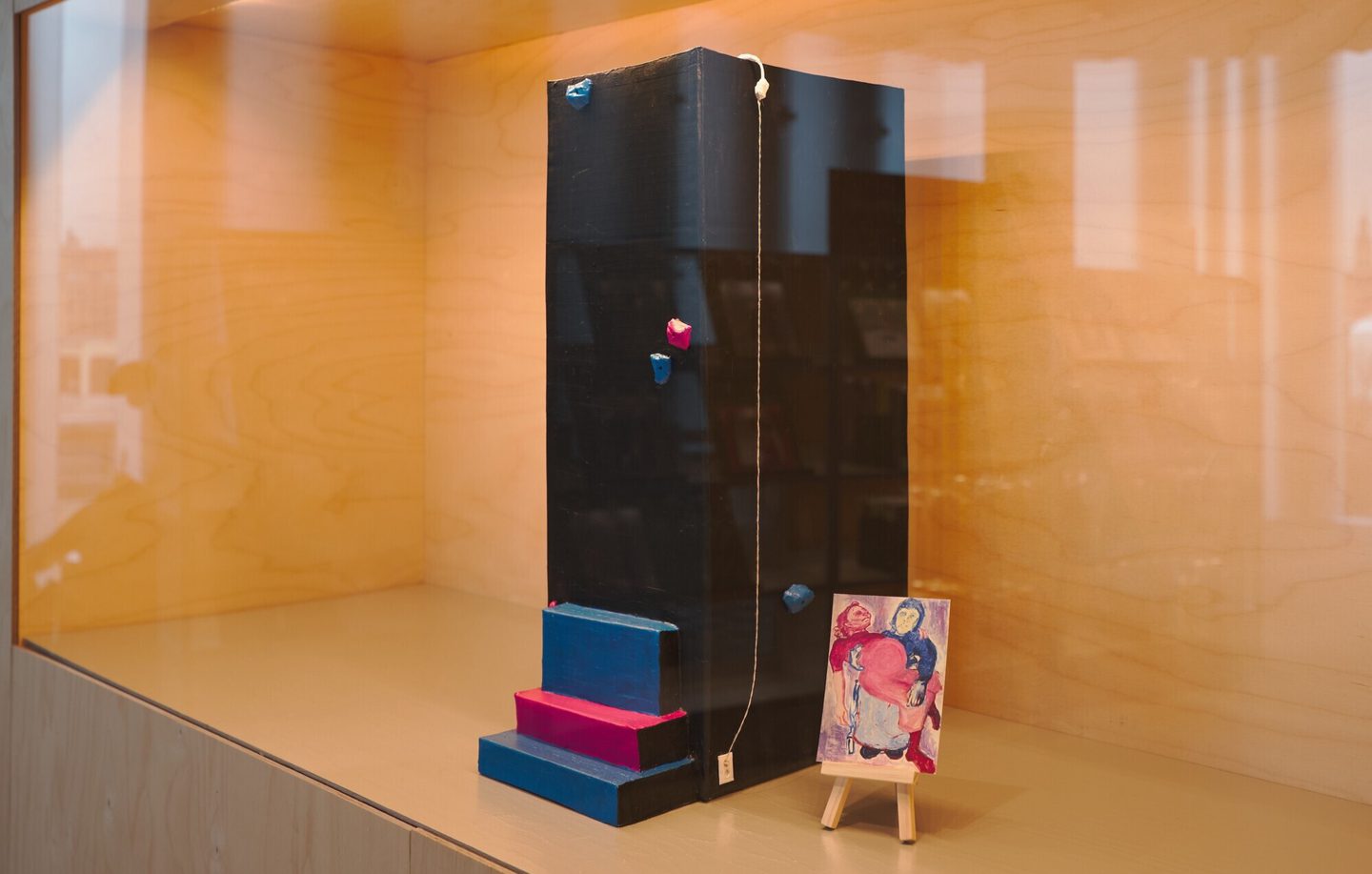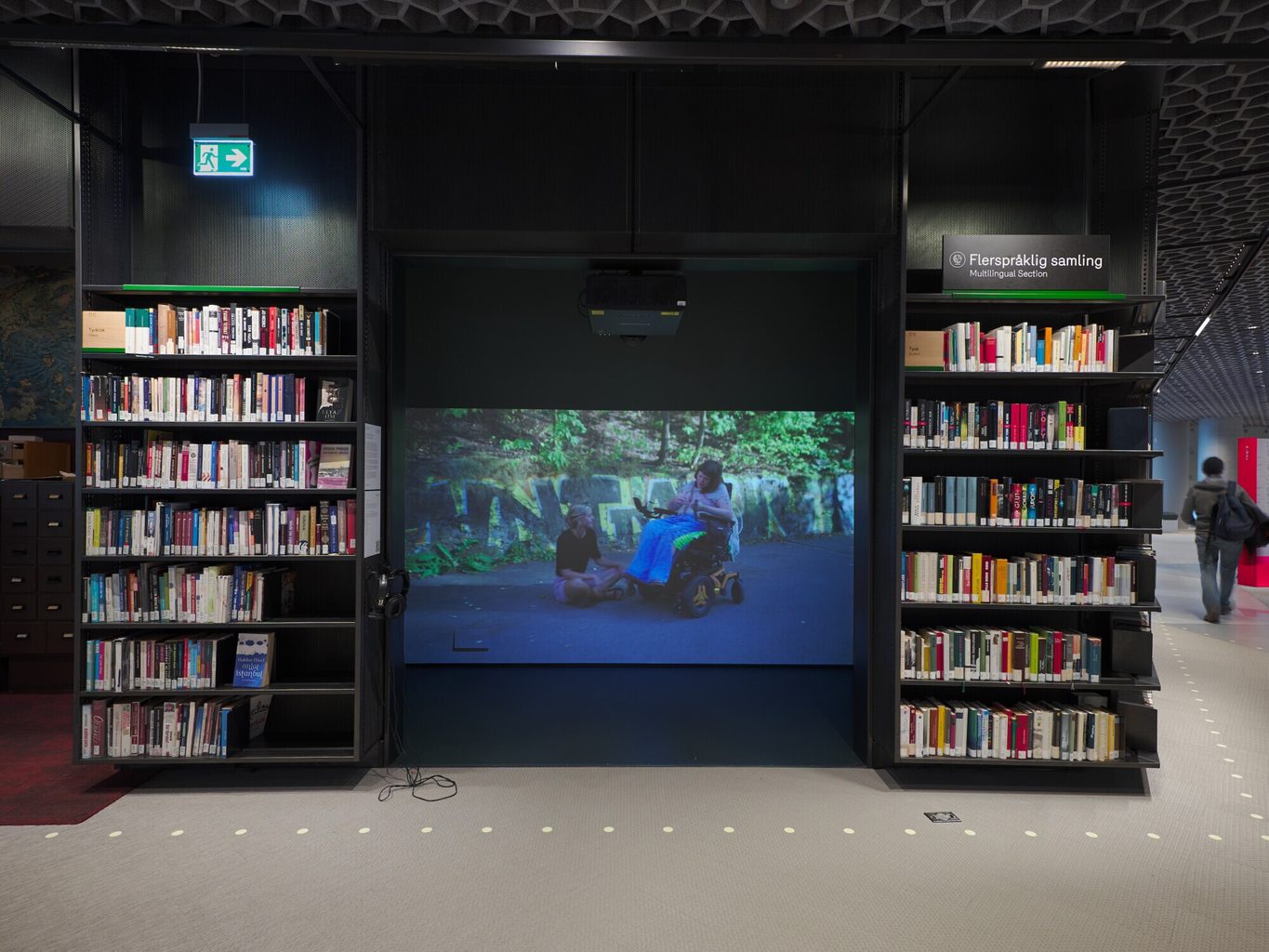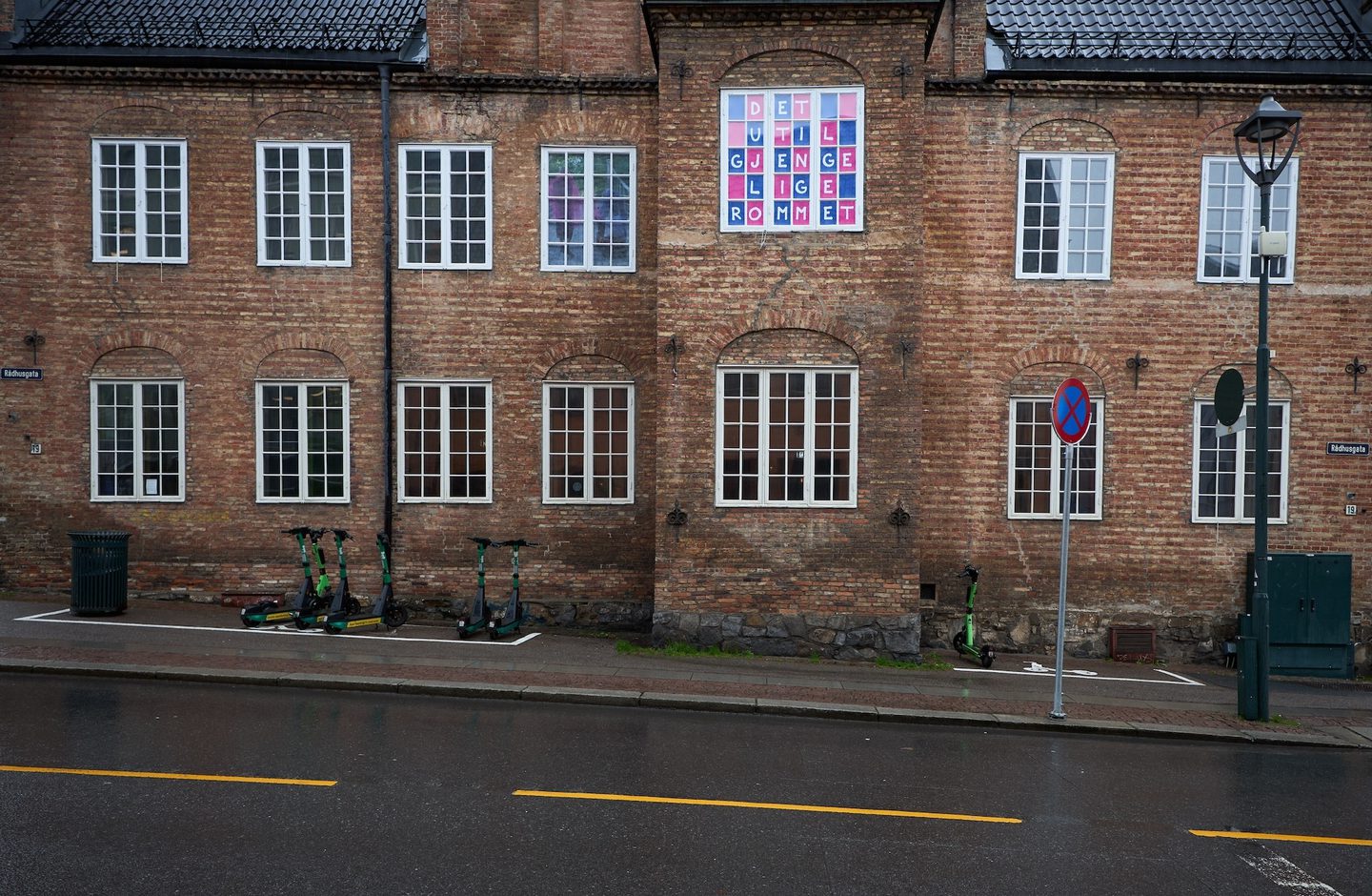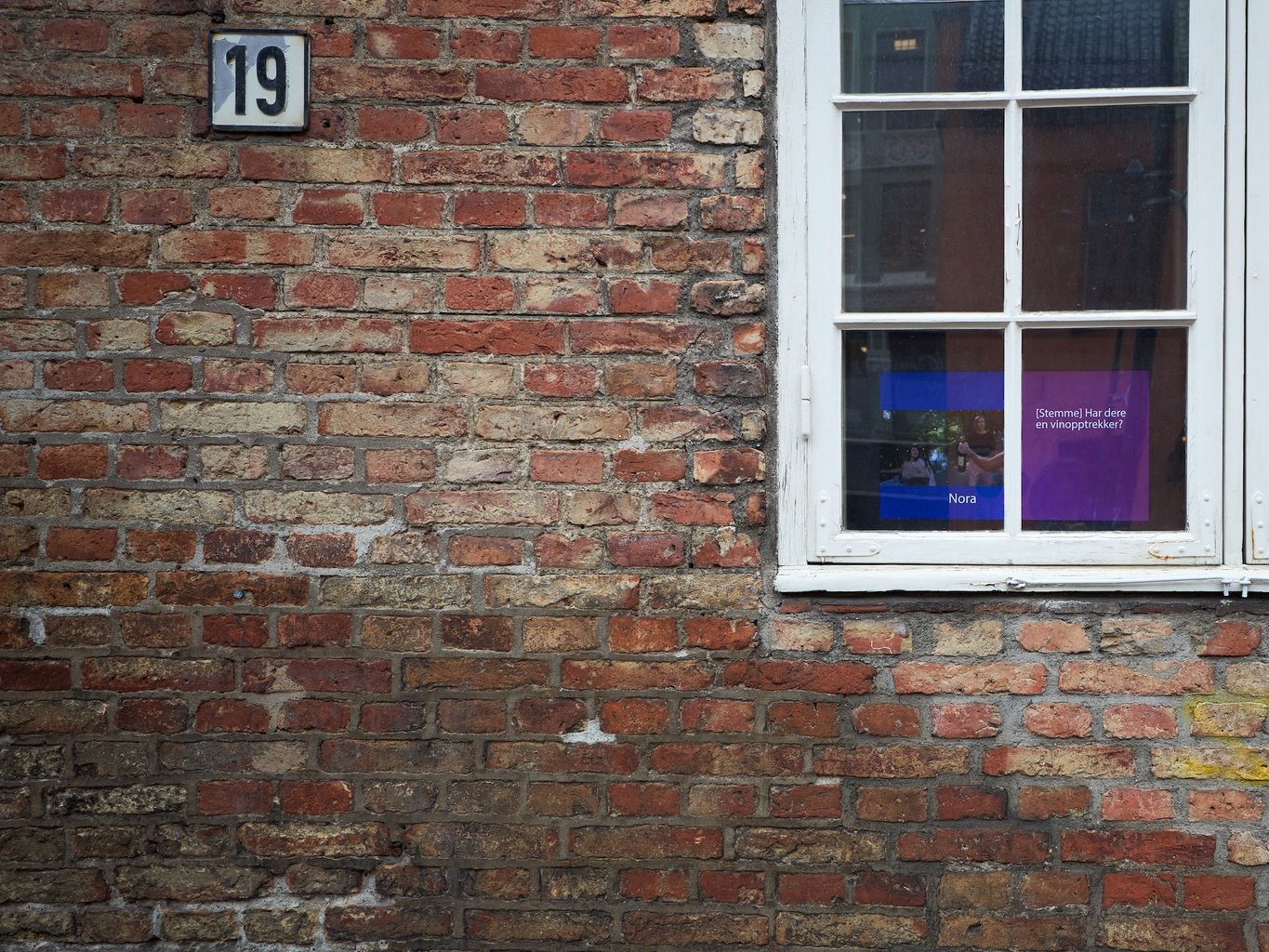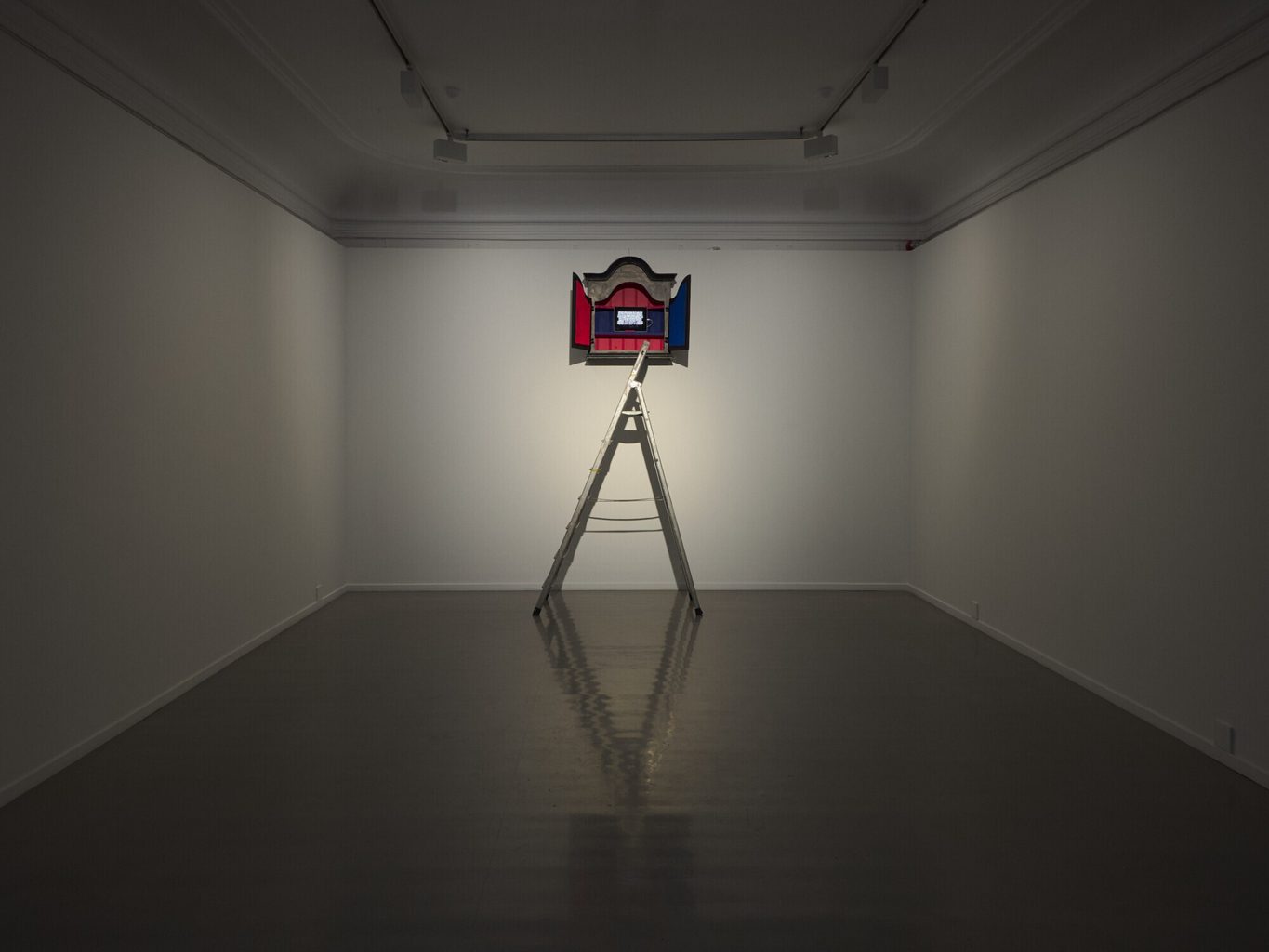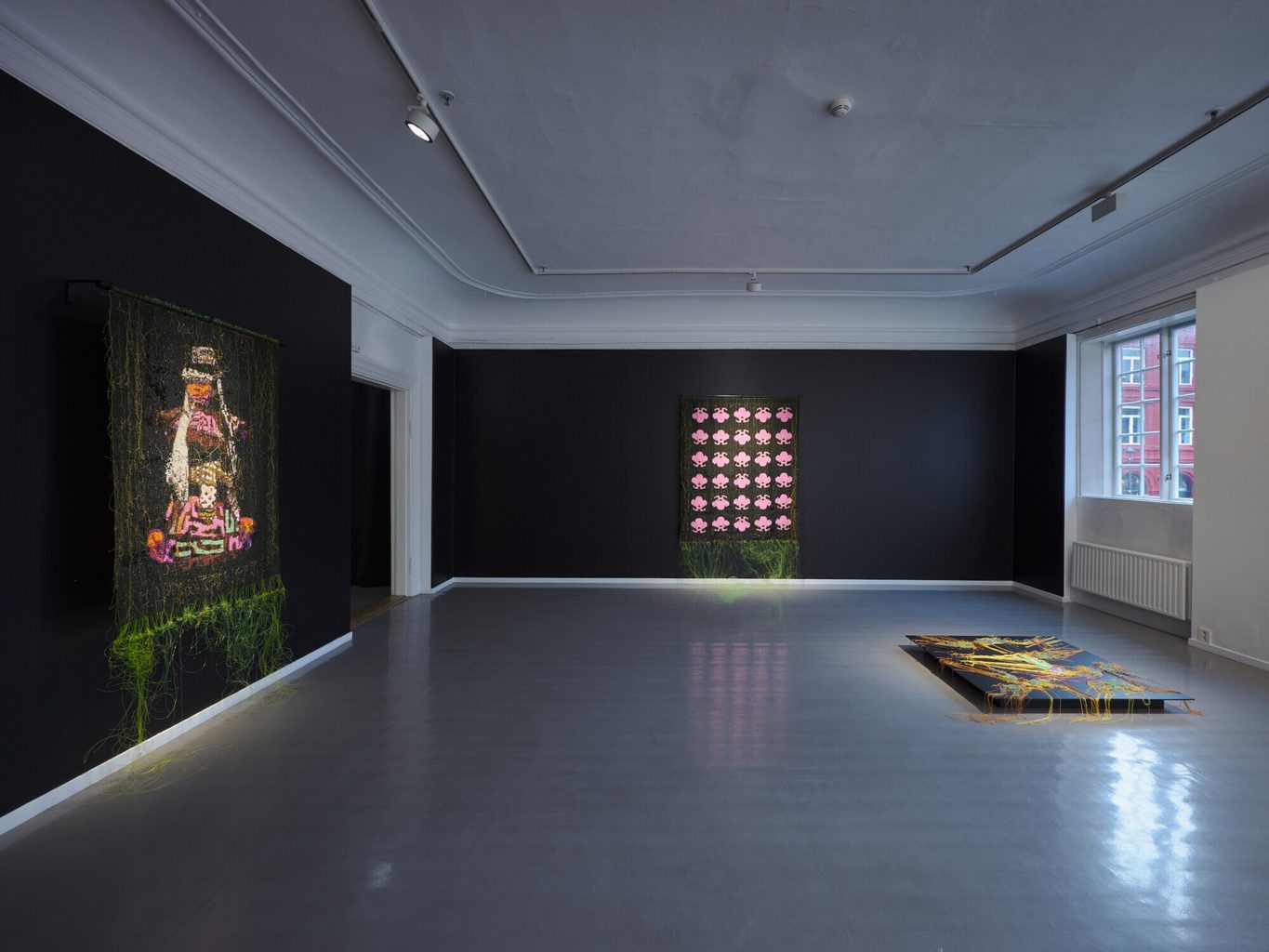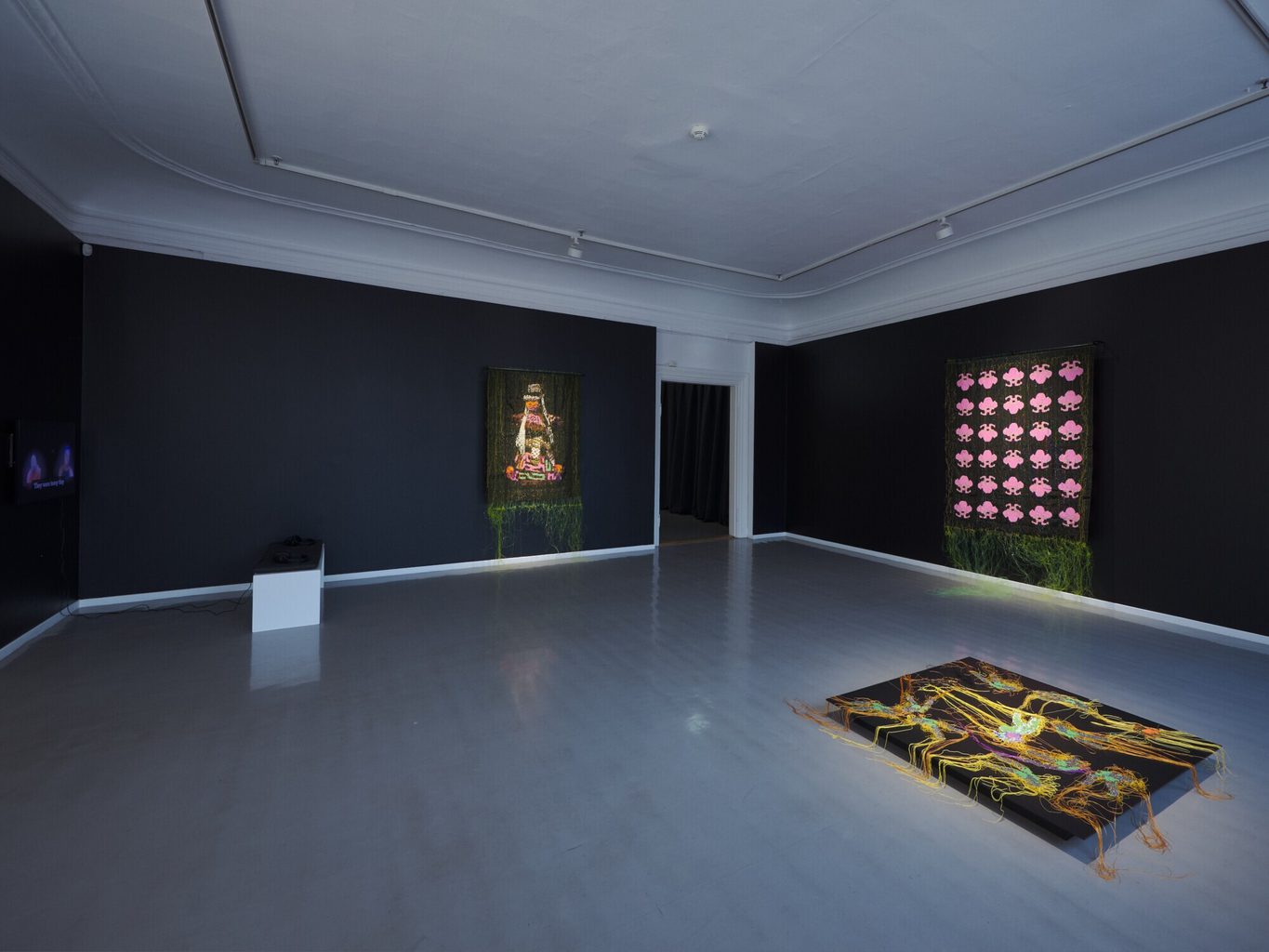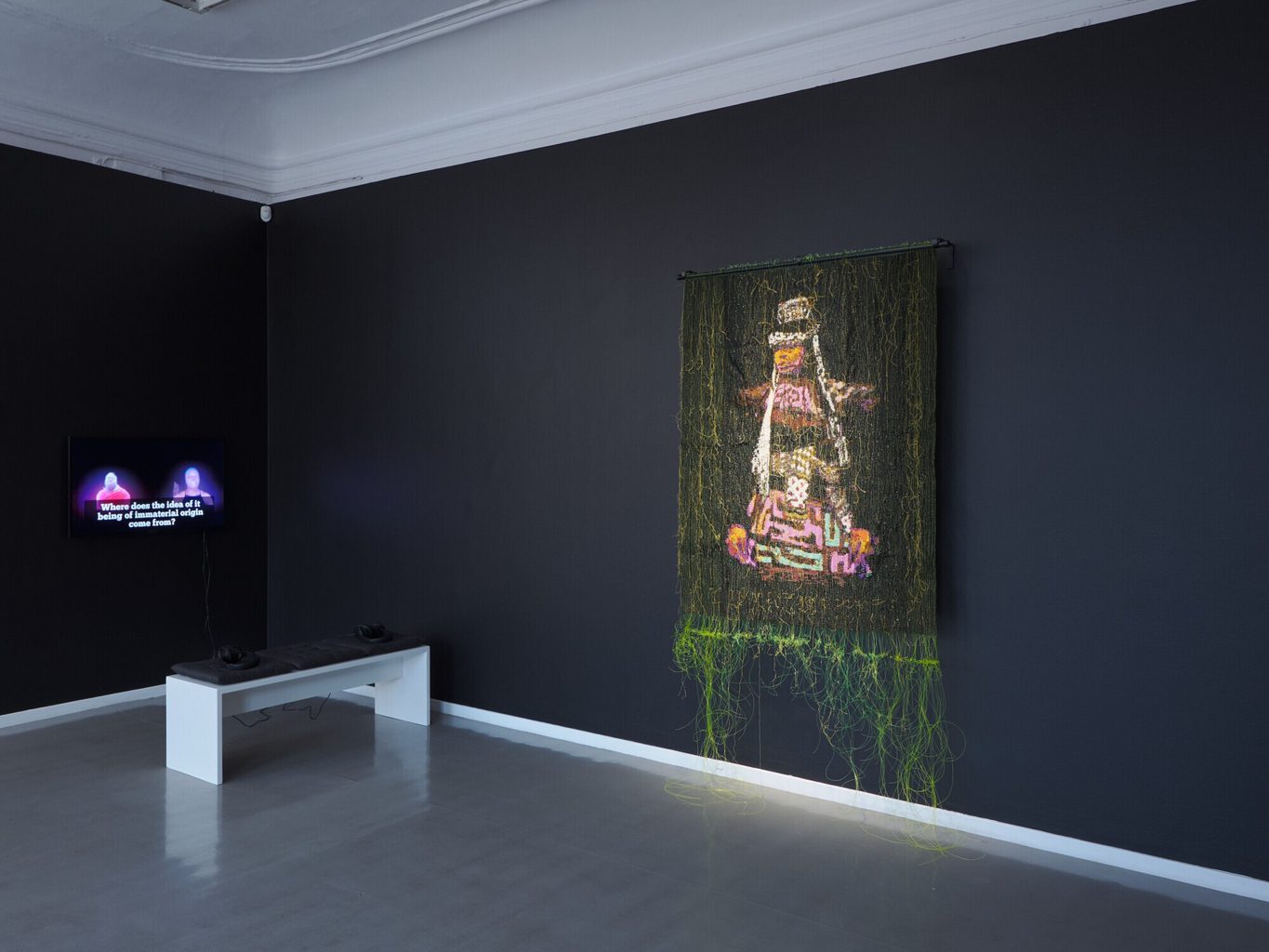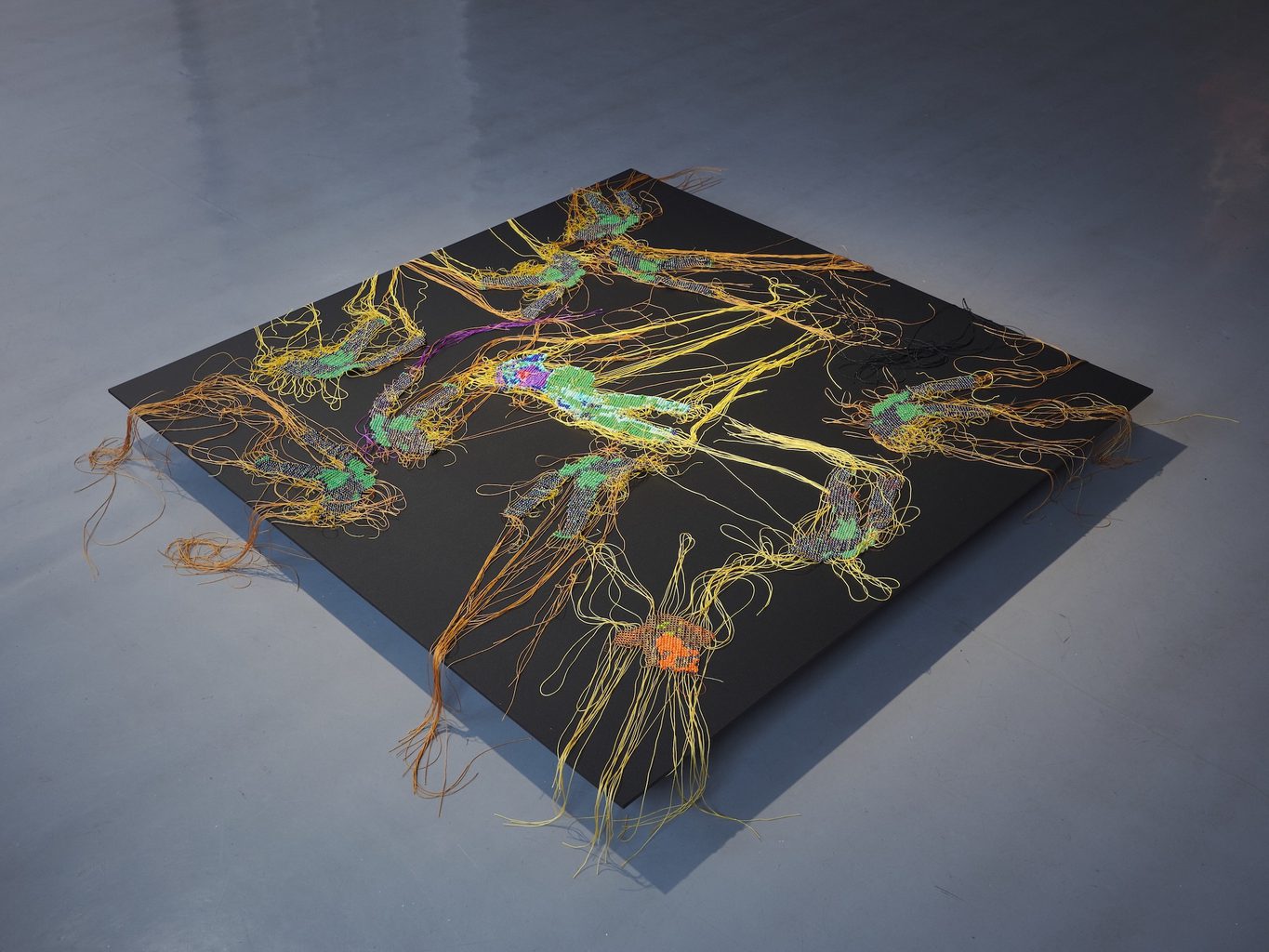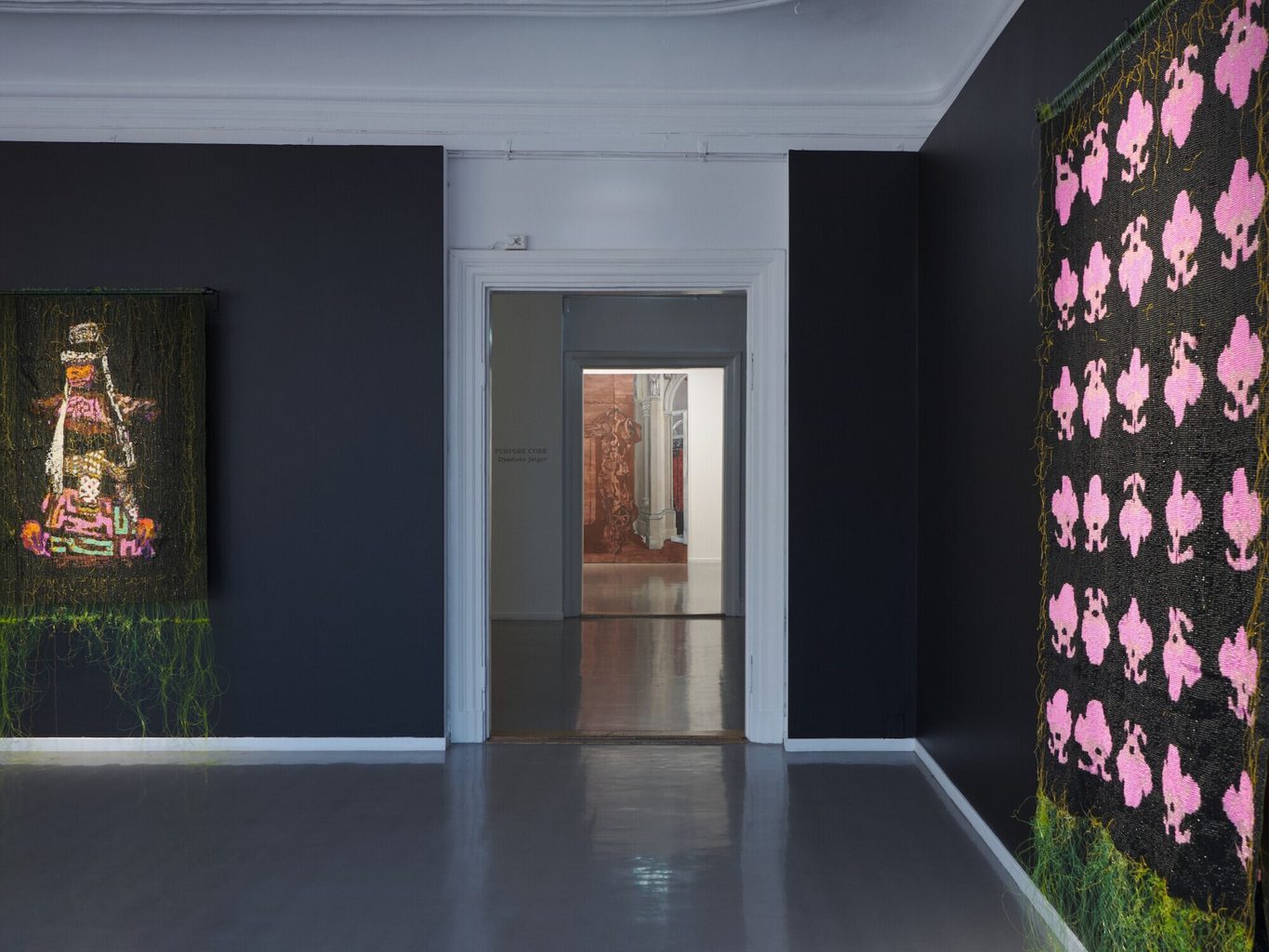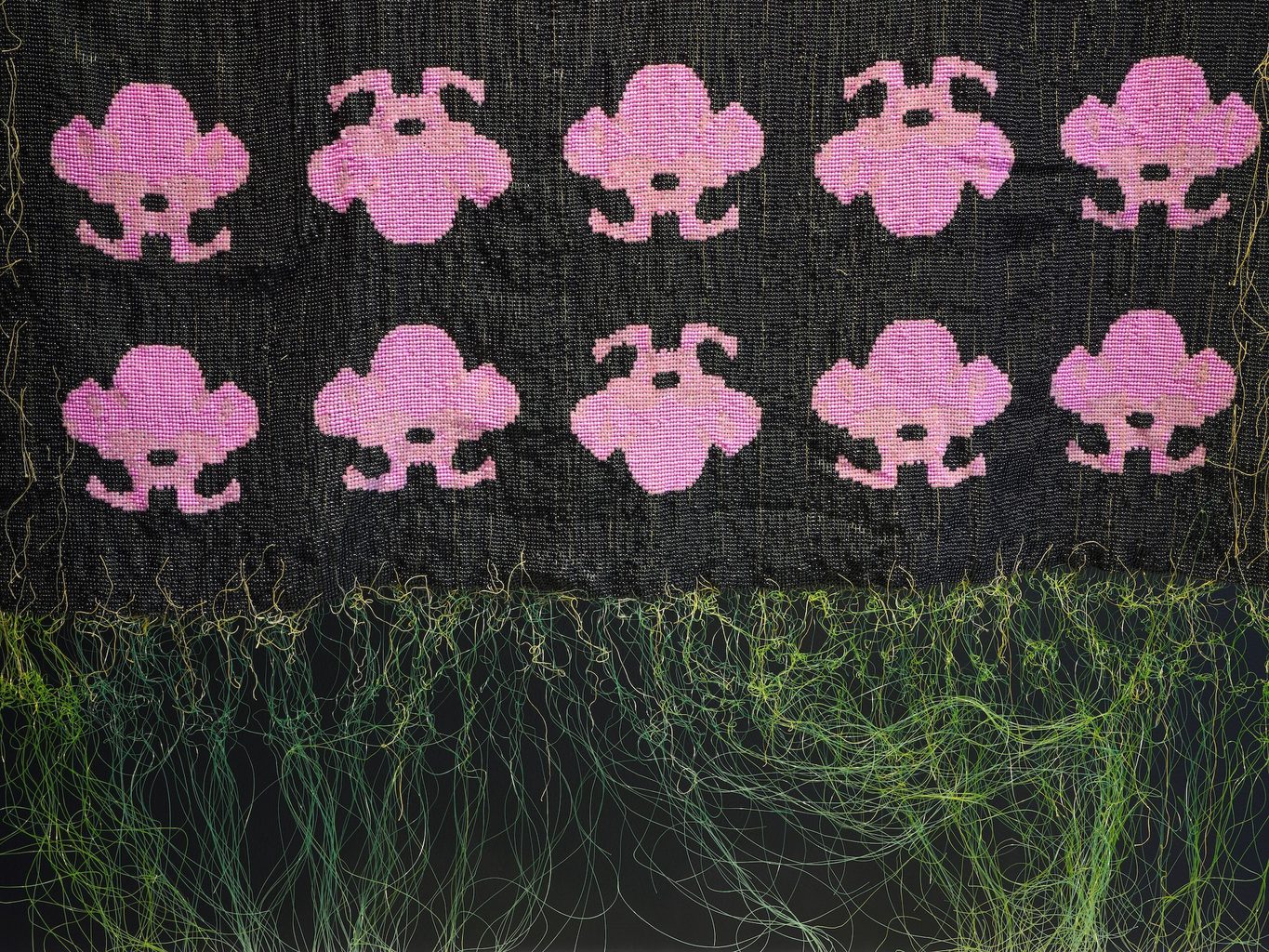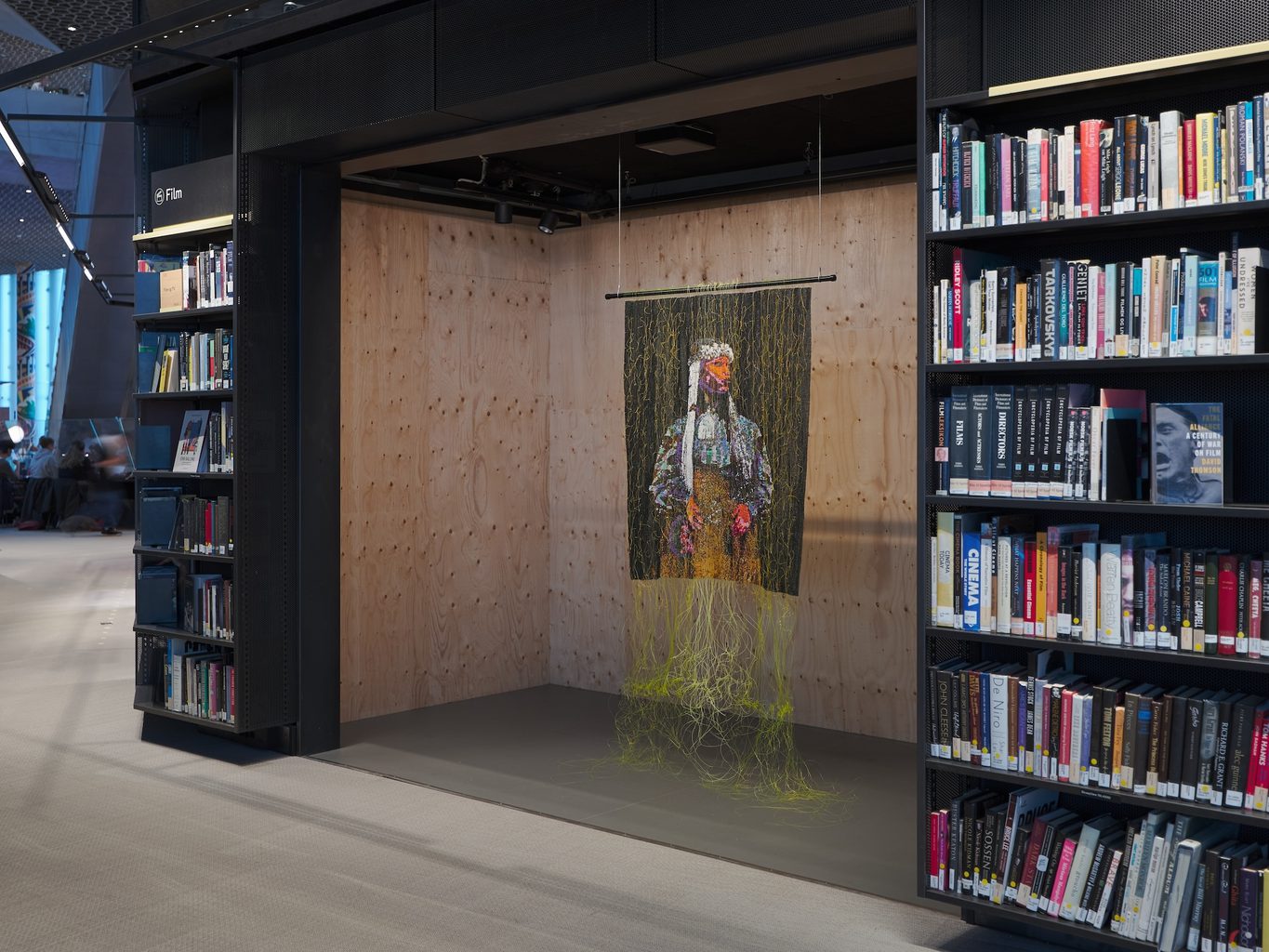Sparebankstiftelsen DNB Grant Exhibition 2025
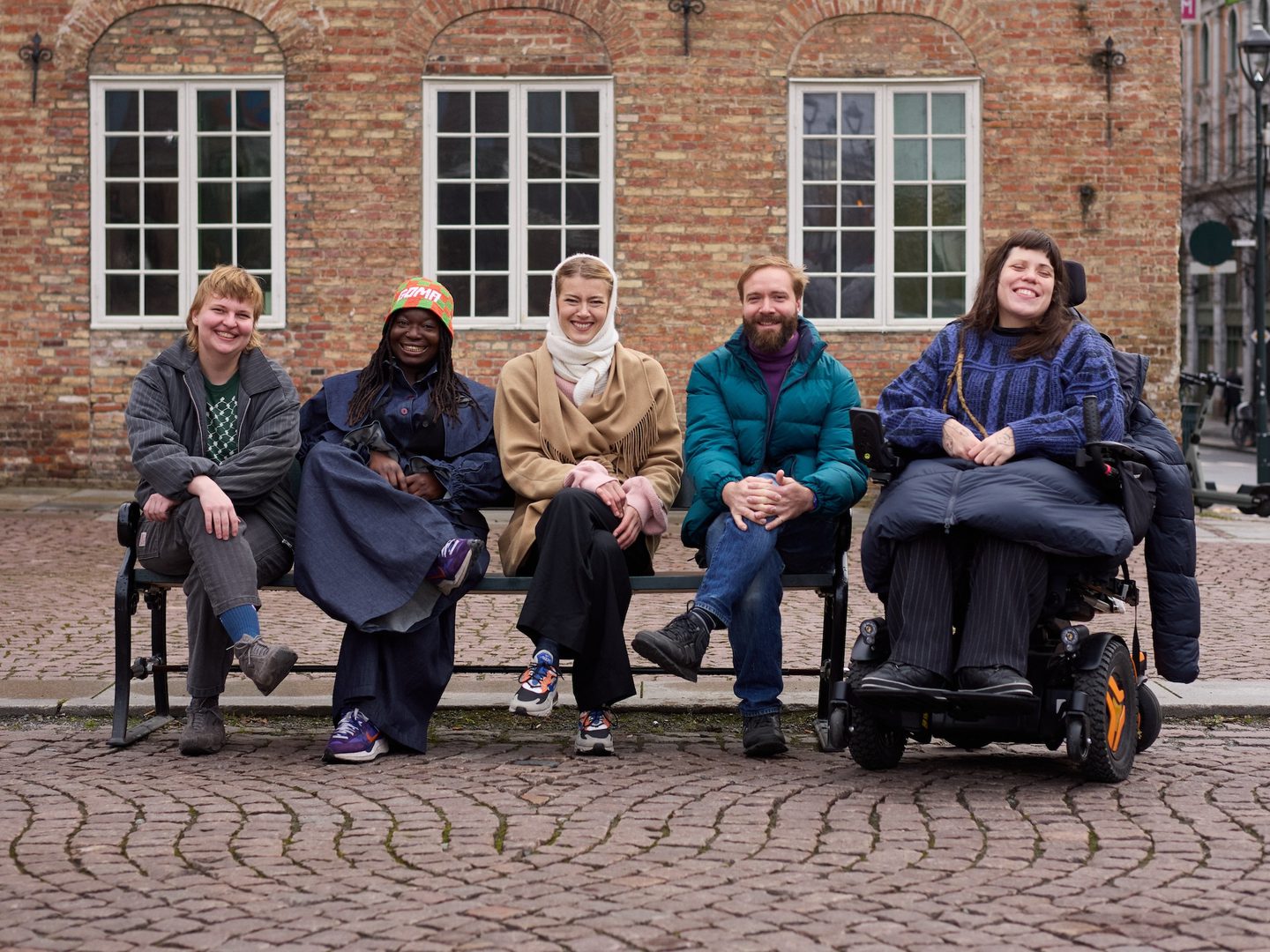
Ellinor Aurora Aasgaard, Rafiki, Katarina Skjønsberg, Zayne Armstrong and Ihra Lill Scharning. Photo: Henrik Follesø Egeland
Oslo Kunstforening is pleased to present the Sparebankstiftelsen DNB Grant Exhibition 2025. This year’s exhibitors are Ellinor Aurora Aasgaard & Zayne Armstrong, PURPOSE CORE, and Rafiki.
New this year is a collaboration with Oslo’s main library, Deichman Bjørvika, which also presents works by the artists. This collaboration makes the art projects accessible to an even broader audience, with various activities taking place across both venues.
The annual grant exhibition is considered one of the most important art prizes in Norway and has been organized by Oslo Kunstforening since 2008 with support from Sparebankstiftelsen DNB. So far, 83 artists have participated in the exhibition, and 21 have received the grant. The recipient of this year’s grant, which has increased to NOK 300.000, will be announced during the exhibition period.
The professional jury consists of Ana María Bresciani, curator at MUNCH; Pedro Gómez-Egaña, visual artist and professor at the Oslo National Academy of the Arts; Sandra Mujinga, visual artist and musician; Axel Wieder, director of the Berlin Biennale; and Elisabeth Byre, artistic director at Oslo Kunstforening.
Previous grant recipients include Eline Benjaminsen (2024), Linda Lamignan (2023), Kim Hankyul (2022), Anne Haugsgjerd (2021), Berivan Erdogan, Hanni Kamaly and Kjetil Skøien (2020), Germain Ngoma (2019), Eirik Sæther (2018), Emilija Škarnulytė (2017), Tor Børresen (2016), Andrea Bakketun and Christian Tony Norum (2015), Ingrid Lønningdal (2014), Sandra Mujinga (2013), Marie Buskov (2012), Kaia Hugin (2011), Ann Cathrin November Høibo (2010), Ignas Krunglevičius (2009), and Ellisif Hals and Susanne Skeide (2008).
Ellinor Aurora Aasgaard & Zayne Armstrong
Since 2018, the artist duo Ellinor Aurora Aasgaard and Zayne Armstrong have explored labour in late capitalism, where traditional boundaries between private and professional lives, inner and outer worlds, as well as fact and fiction, blur.
In this exhibition, they present an installation consisting of paintings, an animated film, and a publication. They investigate the theme of work in order to shed light on what the artist’s role in society is – or could be – in a time defined by ideals of individual freedom and continuous progress.
In the essay The Return of the Middle Ages (1986), the Italian philosopher Umberto Eco argues that we live in an age that in many ways resembles the Middle Ages–marked by economic, political, and cultural upheavals. The essay was written during the Reagan and Thatcher era, when market deregulation was central. This policy led to increasing class divisions and marked the beginning of a neoliberal epoch characterised by new forms of labour and the emergence of the precariat.
In the painting series Progress, Ellinor Aurora Aasgaard and Zayne Armstrong combine medieval iconography with figures taken from the toy industry. Gothic spaces from the altarpiece Szenen aus dem Leben des hl. Bertin – Verkündigung mit Propheten und Evangelisten (1459) by Simon Marmion are here populated by Transformers figures taking “progress selfies” at the gym – a reflection of the zeitgeist, shaped by self-optimisation and the idea that we are the makers of our own fortune. The Transformers’ ability to transform into vehicles and electronics serves as a metaphor for the competition between creative human labour and mechanical, technological – or meaningless – work.
The animated film Based in Berlin follows the artist character Alexandra through an existential crisis. The film is inspired by classic soap operas, both in form and theme, elevating the personal to a universal level. It consists of four independent yet interconnected parts set in various geopolitical contexts. Here, the artists combine collage and animation with visual references to romantic landscape paintings by Caspar David Friedrich and Hans Gude among others. Ideas of progress, self-realisation, and the willingness to embrace a precarious life are emphasised through the paintings’ varying degrees of completion – while simultaneously challenging the notion of the finished artwork.
The publication Common Issues is the latest edition in Aasgaard and Armstrong’s series of “soap opera digests.” The booklet functions as a behind the scenes version of the animated soap, with contributions from collaborators reflecting on themes such as artistic practice, the sociology of dating apps, and socio-economic conditions.
The works are presented as an installation at Oslo Kunstforening, while an adapted version is shown at Deichman Bjørvika, mounted on a printed textile backdrop depicting the reverse side of the aforementioned altarpiece by Marmion.
Audio guide by the artists available here.
PURPOSE CORE
Since 2013, the artist duo PURPOSE CORE (Ihra Lill Scharning and Katarina Skjønsberg) have created performative film manifestos based on rules of living, quotes, and intentions – often presented as installations. Their work emerges from a set of dogmatic rules governing time, method, and division of labor. Through film and performative practice, they explore both existential and trivial questions via their two characters, PURPOSE and CORE. The themes span a wide range – from the subconscious, body image, and disability to delusions, humor, depression, death, and everyday life.
The duo describes themselves as follows:
“PURPOSE CORE celebrates productivity, creativity, life’s trivialities, and existential challenges. Are practical considerations such as accessibility and information obstacles to the autonomy of art? Questions PURPOSE CORE tackles without hesitation. With unwavering rules, we strive to reach as many as possible through a variety of solutions for making art accessible.”
The exhibition Dyadiske følger [Dyadic Consequences], shown simultaneously at Oslo Kunstforening and Deichman Bjørvika, takes the audience on a journey through the duo’s twelve-year collaboration. Both new and earlier works are presented, offering a glimpse behind the scenes of their artistic processes. The title plays on the consequences of artistic duality, where “dyadic” refers to two entities forming a whole.
At Oslo Kunstforening, the installation Det utilgjengelige rommet [The Inaccessible Room] is presented. The 17th-century building lacks universal design, and the artists have not entered the space themselves – instead, they provided detailed instructions for how it should be constructed. With covered windows and a video placed inside a cabinet high on the wall, the audience is invited to experience varying degrees of inaccessibility. One video can only be viewed using a ladder, while the other video and the work on the windows can be seen only from the outside – from street level.
The main part of PURPOSE CORE’s exhibition takes place at Deichman Bjørvika. In various niches throughout the library’s fourth floor, video works are presented in which they proclaim their first, second, and third manifestos. There are also installations featuring props and set pieces from the films.
In one of the niches, their newest film, Manifesto III, is shown. Here, the characters PURPOSE and CORE wander along Akerselva river. Their conversation moves between personal stories, art, spirituality, and society – constantly interrupted by chance encounters along the way. They wake up in PURPOSE’s home, and reality gradually dissolves into fiction. In isolation, disconnected from the internet and their phones, they attempt to reconstruct the events: Was it all just a dream? The film consists of fragments and individual scenes – a drama without a traditional narrative structure – in which the duo seeks to “navigate a society shaped by false teachings, polarization, and subjective truths.”
The film is accompanied by four of the dogmas from PURPOSE CORE’s Dogme 25 – a set of rules for working methods and process, which has itself become an autonomous film work. The remaining nine dogmas form the work Det utilgjengelige rommet III (periskopfilm: Dogme 25) [The Inaccessible Room III (Periscope Film: Dogma 25)], which is shown at Oslo Kunstforening and can be viewed from outside the building.
To make the exhibition as inclusive as possible, the duo has created a video work that, through sound and text in both Norwegian and English, guides the audience through their entire exhibition. The guide is available via QR code at several points throughout the exhibition, both at Deichman Bjørvika and Oslo Kunstforening. The aim is that everyone – including those unable to physically visit either venue – can experience the exhibition and its themes.
Audio guide by the artists available here.
Rafiki
Rafiki works with a broad range of expressions – from photography and textile to weaving and text – and has an interdisciplinary practice as an artist, curator, and editor. The core of her practice is formed from personal experiences of exile and migration, the processing of memories, and a sense of belonging to the African diaspora.
As a witness to the wars in Congo, the artist reflects on the country’s brutal history, marked by centuries of colonial exploitation of people and natural resources. Rafiki uses the autoethnographic methodology as a tool in the decolonization of Western knowledge systems – in an attempt to create a meaningful relationship to both personal and shared experiences.
Rafiki’s exhibited tapestries are based on photographs that are recreated pixel by pixel, with thousands of beads. By returning from the digital to the tactile, time consuming and handmade, the works privilege a slower time of process and meditation as an alternative to technological time.
The works refer to concrete events but also encompass a larger dimension of Congolese history. “On the one hand, the goal is to compose, deconstruct, and rebuild the image as a meditative exercise,” Rafiki says. “At the same time, the repetitive and cyclical work functions as a metaphor for the hard and persistent processes that the Congolese people have been forced to endure for generations.”
In the works, Rafiki explores the invisible forces that bind people and societies together, by fusing knowledge drawn from Central African cosmologies (where black, among other things, symbolizes the mysteries of the universe) with astrophysics theories of dark matter and dark energy (the type of matter that can neither be seen nor measured, but is between everything and theorized to constitute 95% of the universe).
The symmetrical patterns in the works are derived from Central African cultures, and highlights knowledge and experience that have existed on the continent for centuries – cultural, spiritual, and aesthetic codes that in many ways anticipated what is now studied by researchers in the global North. The beads and threads in the works represent the hidden particles and connections that lie beneath the surface: small and fragile alone, but strong in unity.
The resurgence of war in Eastern Congo a year ago was the trigger for these works. Rafiki describes the intensifying feeling of living in several realities: “Especially in times of war, it becomes clear to me that I live in a multiverse, where parallel versions of myself live their own lives. At the same time Rafiki in Oslo is equally connected to Rafiki in Goma, Bukavu, and various refugee camps.”
The title Kasala for the Living Dead refers to the Congolese Luba tradition kasala: a performative and poetic genre performed at major gatherings. Through a rich interplay of slogans, proverbs, myths, and stories, personal achievements and collective histories are conveyed. The large bead works, with both abstracted and concrete references, can be regarded as mourning cloths or acts of processing, such as in the work Sitting with Delcat Idengo, which addresses the murder of the musician Delcat Idengo. Details from a photograph of Idengo have become an abstract pattern in pink and black, reminiscent of the musician’s head and hat. The work Sitting with Asifiwe Baibonge, which honors the young female human rights defender who was brutally murdered earlier this year. This is not a continuous tapestry, but fragments that represent her dead body.
Sitting with Meshake is a video collage that weaves together a conversation between Rafiki and Meshake about growing up in Eastern Congo. The conversation is mixed with music videos and images of war that create a layered backdrop. The work follows Meshake’s journey from a child, to a child soldier, and later to health worker. Through reflections on the local defense group Mai-Mai, ancestral knowledge systems and community, the image of the region as unchanging is challenged.
Resting in Supersymmetry and Listening to Dark Matters (the latter shown at Deichman Bjørvika) are based on photographs of the artist herself wearing garments that refer to the traditional Norwegian bunad, but transformed into an Afro-Norwegian variant. This “Afro-bunad” recreated in beads is a symbolic meeting point between craft tradition, cultural heritage, and personal identity. Rafiki explores how aesthetic expressions can carry and transform narratives of belonging, diaspora, and cultural self-representation.
Audio guide by the artist available here.
Ellinor & Zayne
Ellinor Aurora Aasgaard (b. 1991) and Zayne Armstrong (b. 1986) live and work in Berlin and Kristiansand. Ellinor Aurora Aasgaard holds a bachelor’s degree from Malmö Art Academy, and Zayne Armstrong holds a bachelor’s degree from Central Saint Martins and studied at the Piet Zwart Institute. Their work has recently been shown at K4, Oslo (2025); the biennial FORT_01, Franzensfeste Fortress, Bolzano (2024); CCA Ujazdowski, Warsaw (2024); Buskerud Kunstsenter, Drammen (2024); NKR, Düsseldorf (2023); Vigelandmuseet, Oslo (2023); Agder Kunstsenter, Kristiansand (2023); Pogo Bar – KW Institute for Contemporary Art, Berlin (2023); and Kunstnernes Hus Kino, Oslo (2023).Their work is represented in the art collections of Trondheim municipality and the National Museum in Oslo.
PURPOSE CORE
PURPOSE CORE, Ihra Lill Scharning (b. 1986) and Katarina Skjønsberg (b. 1987), both live and work in Oslo. Scharning holds a master’s degree from Malmö Art Academy and a practical-pedagogical education from Oslo Metropolitan University, while Skjønsberg holds a bachelor’s degree in photography from Bergen Academy of Art and Design, a master’s degree from Oslo National Academy of the Arts, and a practical-pedagogical education from Oslo Metropolitan University. PURPOSE CORE has participated in Østlandsutstillingen (2024) and Høstutstillingen (2023)], and held a solo exhibition at Prosjektrom Carl Berner organized by Norsk Billedhoggerforening (2023). Previously, the duo has shown works at Kunstnernes Hus Kino, Oslo (2023), Nikolaj Kunsthal, Copenhagen (2014), and at KHM Gallery, Malmö (2014).
Rafiki
Rafiki (b. 1989) is based in Oslo and Cape Town. She holds a bachelor’s degree in International Development Studies from OsloMet and a master’s degree in Social Communication from the University of Agder. She is the founder of the Oslo-based platform Rafiki Art Initiatives (RAI), and has recently exhibited at Hordaland Kunstsenter, Bergen (2025), Henie Onstad Kunstsenter, Bærum (2024), Bomuldsfabriken Kunsthall, Arendal (2024), and Buskerud Kunstsenter, Drammen (2024). Her works are in the collections of Preus Museum, Nordenfjeldske Kunstindustrimuseum, and Kunst på Arbeidsplassen. Rafiki is one of Atelier Kunstnerforbundet’s artists for the 2024–2026 period.
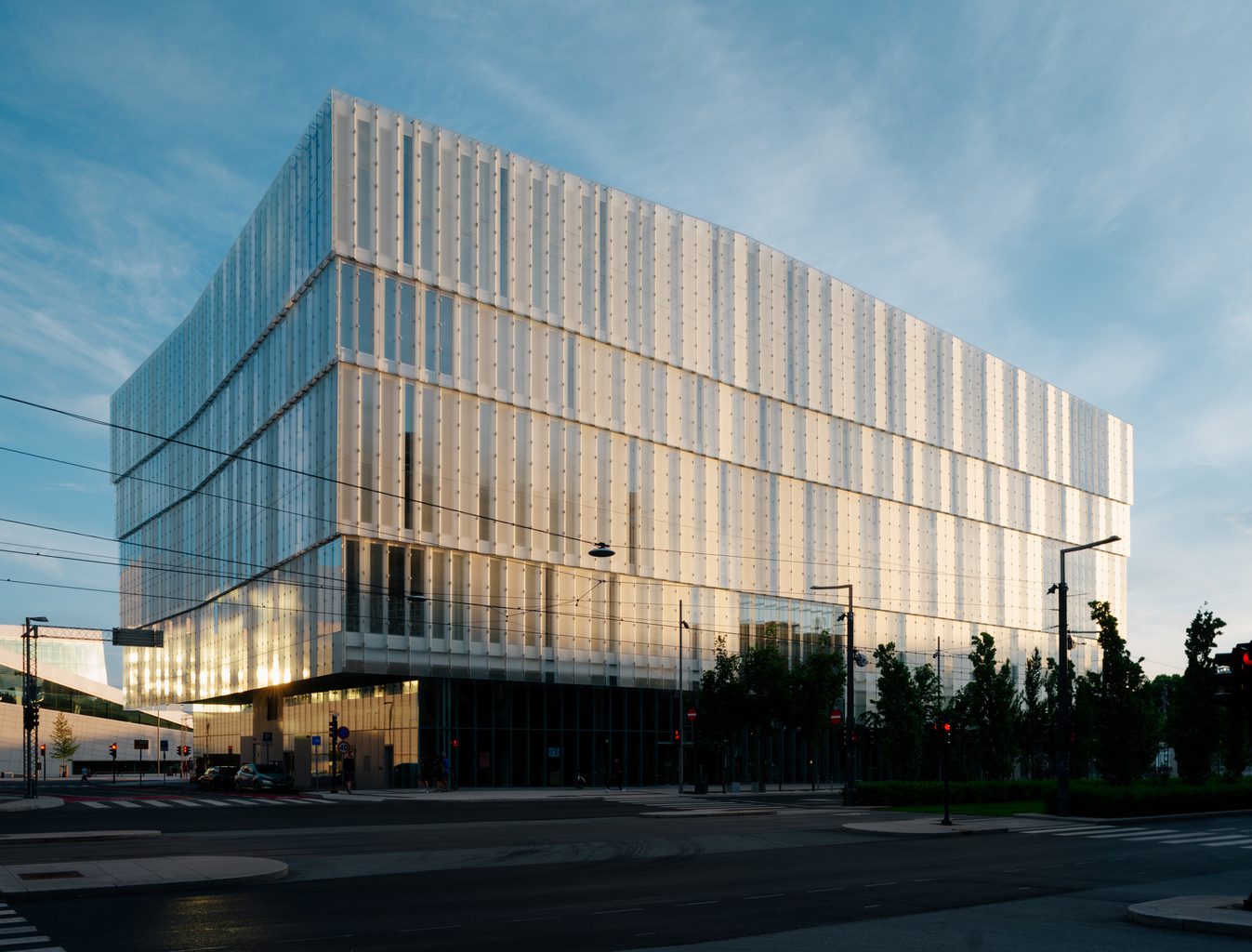
Deichman Bjørvika. Photo: Einar Aslaksen
Events
Artist talk: Ellinor Aurora Aasgaard & Zayne Armstrong
8 November, 14–15
Oslo Kunstforening
Artist talk with Ellinor Aurora Aasgaard & Zayne Armstrong at Oslo Kunstforening. The conversation will be held in English and moderated by jury member Pedro Gómez-Egaña.
Film screening and artist talk: PURPOSE CORE
14 November, 18–20
Deichman Bjørvika
Screening of Manifesto I (26:42 min) and Manifesto II (48:35 min) in the library’s cinema, followed by an artist talk moderated by jury member Ana María Bresciani. The conversation will be held in Norwegian.
Artist talk: Rafiki
27 November, 18–19
Oslo Kunstforening
Artist talk with Rafiki at Oslo Kunstforening. The conversation will be moderated by freelance mediator, Lisa Andrine Bernhoft-Sjødin, and held in Norwegian.
Film screening: PURPOSE CORE
9 January, 18–20
Deichman Bjørvika
Screening of Manifesto I (26:42 min) and Manifesto II (48:35 min) in the library’s cinema. The artists will provide live audio description for those who wish to use it.
